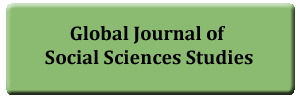Examining the Relationship between Co-teaching and Special Education Teachers’ Self-efficacy for Teaching Elementary Mathematics
DOI:
https://doi.org/10.55284/ajel.v7i2.707Keywords:
Co-teaching, Elementary mathematics teaching, Self-efficacy for teaching mathematics, Special education teachers, Teacher self-efficacy, Teacher collaborative relationships.Abstract
This study examined the relationship between co-teaching and elementary special education teachers’ self-efficacy for teaching mathematics. A combined Co-Teacher Relationship Scale and Self-Efficacy for Teaching Mathematics Instrument was administered to 103 elementary special education teachers from Superintendent’s Regions 2 and 3 in the Commonwealth of Virginia who co-taught mathematics for at least one class period per day yielding a 54% response rate (N = 56). Employing a Spearman’s Rho, analysis revealed moderate, positive, statistically significant correlations between the co-teaching relationship and self-efficacy for teaching mathematics (rs = 0.41, p = 0.002) and between the grade level co-taught and self-efficacy (rs = 0.43, p = 001). There was also a small, positive correlation between the number of years a special education teacher co-taught mathematics and self-efficacy for teaching mathematics (rs = 0.20); however, that relationship was not statistically significant (p = 0.14). A one-way ANOVA revealed that special education teachers who co-taught Grade 5 had the highest self-efficacy score (M = 92.85, SD = 13.39) compared to those who co-taught Grade 2 (M = 83.38, SD = 13.49), Grade 3 (M = 81.00, SD = 12.49), Grade 4 (M = 80.90, SD = 15.61), Grade 1 (M = 74.33, SD =11.74), Kindergarten (M = 73.25, SD = 13.15), and pre-Kindergarten (M = 68.33, SD = 22.23). The implications include providing co-teachers with time to develop collaborative relationships prior to co-teaching, increasing training and implementing effective scheduling and planning practices for co-teaching teams, and increasing job-embedded mathematics training for special education teachers.



